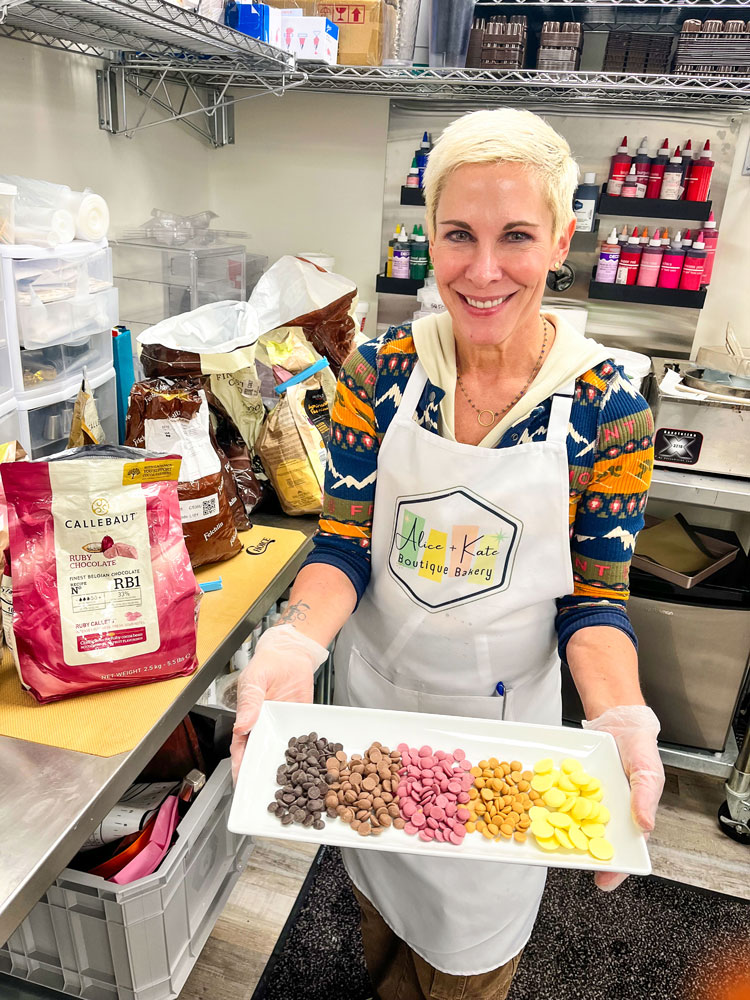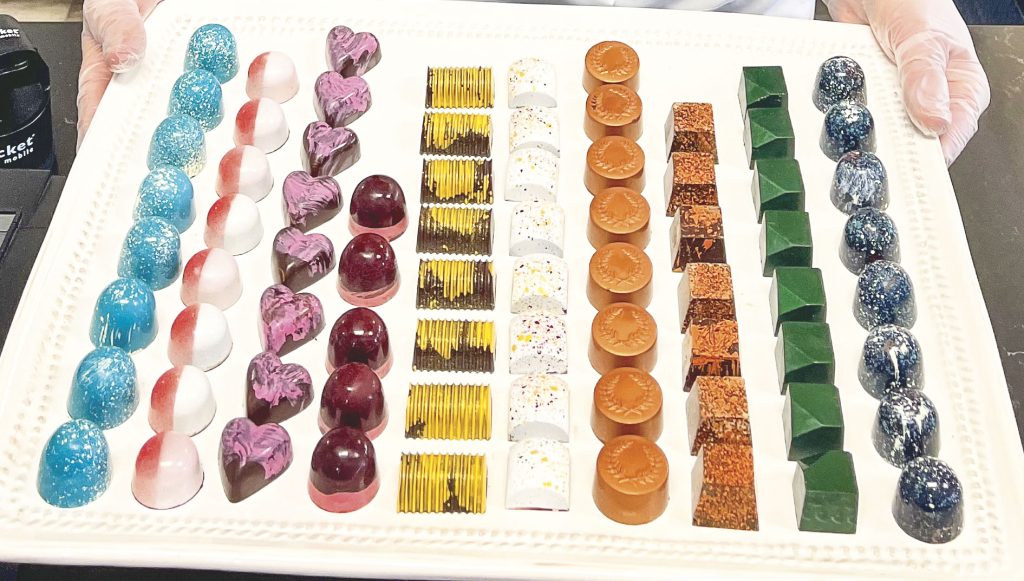All about chocolate

Gretchen Harrison of Alice + Kate Boutique Bakery on Castle Pines Parkway showed a few of the many different types of chocolate she uses. One of the samples is a new caramel chocolate that has a caramel color and flavor thanks to caramelized sugar.
When purchasing chocolate for holiday recipes, there are many types to choose from. What differentiates semisweet from bittersweet? Why is white chocolate softer than milk chocolate? Is dark chocolate really better for us than the others? Here are some answers…
The base of all types of chocolate is chocolate liquor, sometimes called unsweetened chocolate. This thick, dark brown paste is created from cacao nibs, the inside of the cocoa bean. After being fermented, dried, roasted (there are many different techniques) and separated from their skins, the nibs are finely ground and then heated to become a liquid paste containing cocoa solids and cocoa butter. The liquor is then ready to be mixed with other ingredients.
White chocolate is made by combining cocoa butter, sugar, milk, vanilla and lecithin, an emulsifier (or additive) to enhance smoothness. White chocolate does not contain cocoa solids. Good quality white chocolate will have a rich, soft and creamy texture, and it should not be white, but rather ivory or pale yellow, the color of cocoa butter.
Milk chocolate is made by combining chocolate liquor with sugar and milk. Sometimes an emulsifier is added. Milk chocolate is characteristically sweeter with a softer texture than dark chocolate but not as sweet and soft as white chocolate.
Dark chocolate is sometimes called semisweet chocolate since it is noticeably less sweet than milk chocolate with a cocoa content between 35-60%. Dark chocolate is typically made with two ingredients – chocolate liquor and sugar. The lack of dairy in most dark chocolates and less sugar give dark chocolate a firmer texture than milk chocolate or white chocolate.
Bittersweet chocolate, sometimes called extra-dark chocolate, typically has a cocoa content of 66% or higher and less sugar than semisweet. The flavor profile can vary depending on where the cacao is grown. Bittersweet and semisweet are interchangeable when baking depending on the recipe and personal taste preferences. Bittersweet will give a recipe a deeper, less sweet flavor than semisweet.
Dark chocolate and extra-dark chocolate have surged in popularity thanks to published articles about its health benefits. According to healthline.com, quality dark chocolate with a 70% or higher cocoa content (enjoyed in moderation) can provide powerful health benefits as it is an excellent source of antioxidants.
Ruby chocolate has a red-pink hue derived from a specific type of cacao with flavors of intense fruitiness and slightly tart notes.
Gretchen Harrison of Alice + Kate Boutique Bakery explained, “There is a reason I have about 18 different types of chocolate here in my shop; it depends on the application.” Gretchen shared that she is using a new fruit-infused chocolate in her passion fruit caramels and chocolates.
A good quality chocolate bar or an assortment of custom chocolates makes a delicious gift.

The artisan chocolate bonbons at Alice + Kate bakery are beautifully designed and filled with handcrafted caramels, ganaches and fondants. Some of the many flavors available include creme de menthe, raspberry white chocolate ganache and bananas foster.
Article and photo by Lisa Nicklanovich